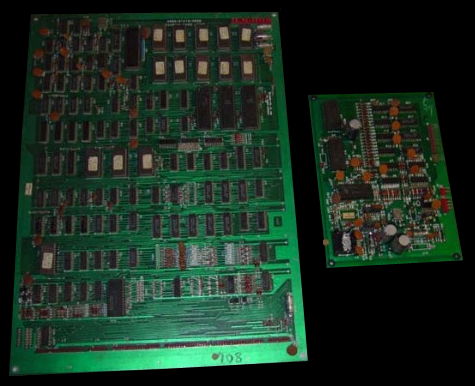Laserdisc Game Emulator For Mac
Here is a list of laserdisc arcade games and. Mac CD-ROM: X. All the games released for the Palcom MSX system can be played using the openMSX emulator. DAPHNE is a Free laserdisc game emulator that allows one to play laserdisc arcade games on one's PC. Using DAPHNE, one can play the following laserdisc arcade games. Toshiba Tempro Updates on this page. A blog about gaming and emulation for Mac OSX. This is an awesome Laserdisc Emulator that has some interesting features. Build your game and then try it out on. Summer brings memorable news for the emulator of emulators MAME. Finally MAME emulates its first laserdisc videogame.. The very best Laser Disc game around town!

November 2, 2009 There is currently a new NES/Famicom emulator for Mac called MaciFom. It is brand spanking new and only for Mac OSX. In true OSX style it tries to take advantage of AppKit, OpenCL, CoreAudio, and OpenGL. Here is the information from their.
• Cycle-exact CPU (6502) emulation for valid opcodes • Scanline-accurate rendering by the PPU • Windowed and full-screen display modes. • Controller input via keyboard. • Support for NROM, UNROM, CNROM and MMC1 mappers. • A debugger featuring live disassembly of program code, reading and writing of memory values, display of CPU registers, breakpoints and step-through of opcodes. You may download the emulator from the Box File Widget on the right hand side of this blog.
Egalax Touch Driver Linux Serial Terminal. October 26, 2009 I have scoured the internet to find all the possible Playstation emulators for the Mac. FlareStorm and PCSX are the most popular ones out there right now, however there are others. VGS was the first commercial Playstation emulator for the Mac, but soon faded away. The demo is still available for download, so I have posted it and the others in the Box File Widget. Kirk Rudy 527 Tabber Manually on this page. The Pi and PSMac are smaller, less known Playstation emulators for the Mac. Those have also been posted as well.
Last, but not least, there are plugins for Flarestorm and PCSX available for download too. To get certain games working properly, you will need these plugins. Many of these emulators require older operating systems and won’t function in Leopard, even with their Classic Environment support. I was unable to try VGS. I did manage to get PCSX running after installing Rosette.
Your Mac will tell you to install Rosette and then install it for you. After installing Rosette, you should be free to play Playstation games on your Mac. For better compatibility, don’t forget to install the extra plugins too. Grab all these emulators from the Box File Widget on the right.
Flarestorm, PCSX, The Pi and PsMac are all in there. I’ve renamed them so that they might be easier to pick out from the Box File Widget.
Summer brings memorable news for the emulator of emulators, that after the introduction of the and the preservation of experiences a “first time” long awaited by enthusiasts, priers and simple players interested of the matter: of the software adds the first lasergame (or laserdisc videogame) to the supported arcade titles, making real a work of years and putting an end to controversy and speculations that go along with the matter since. The maker of the exploit is once again, dean of mamedevs and current supervisor of the MAME project on the whole. Giles himself had announced,, that the endless debate on the lasergames addition to the emulator would had given way to facts and concrete coding work. A work that has evidently been long and toilsome, during which the coder and emu-maniac Giles has ran into the difficulty to adapt the analog nature of the games recorded on laserdiscs to the principle of “accuracy first of all” pushed by the emulator-Borg core team and by Giles himself. As in fact is well known to the enthusiasts, on what are optical supports to all intents and purposes (laserdiscs, precisely) the publishers have encoded, in the period of time between 1983 (release year for Don Bluth’s ) and the half of the Nineties, analog animations rather than digital ones, dooming the contents to a slow but steady reduction in quality with the time passing. And just the implementation of proper lossless codecs was the first of many problems confronted (and evidently solved) by Giles, worried as usual about integrating the lasergames emulation with an adequate cleanness and structural consistency of the code, to let the archiving of the inner workings of the laserdisc-based arcades be as closer as possible to the original hardware., the emulator that since and first has reproposed the genre classics on PC, is satisfied by a hugely inferior level of fidelity being enough a simple audiovisual stream in MPEG-2 compressed format. According to the information published by Giles in the past months and years, the movies that act as a background to lasergames “semi-interactivity” (that are for the most cartoons to wind on by using the fire button or the joystick lever just at the right time) have been captured to the standard resolution of the DVD format with NTSC video (720×486), packed with an ad-hoc custom algorithm and lastly stored in enormous files in CHD format (Compressed Hunks of Data), already used for those arcades based on hard disks or optical disks like CD or the above said DVD.